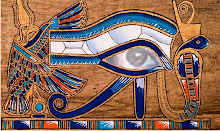Yes its true...they microwave your brain cells! I'm going to miss having it around though even though I have found it to be aggravating. Long live the brain cells!!
Thursday, July 31, 2008
Wednesday, July 23, 2008
Lady in White
 White Tara
White TaraShe is distinguished by "her body ... white, as an autumn moon; clear as a stainless crystal gem, radiating light. She has one face, two hands, three eyes. She is described in manuals as having "the youth of 16 years" but is often depicted as more full-bodied than Green Tara. Her right hand makes the gift-bestowing gesture, and with the thumb and ring finger of her left hand she holds a branch of white utpala, its petals on the level of her ear.
There are three flowers in various stages of growth symbolizing the three times (past, present and future.) The first bloom that is in seed, usually on the right, stands for Buddha Kashyapa who lived in a past eon; the second in first bloom stands for the historical Buddha Shakyamuni, whose activity has brought you here today, and the bud on the left symbolizes future buddhas -- the expected one is Maitreya Buddha.
Her hair is dark blue, bound up at the back of her neck at the back with long tresses hanging down; her breasts are full; she is adorned with divers precious ornaments, her blouse is of vari-colored silk, and her robes are of red silk, the palms of her hand and the soles of her feet each have an eye, making up the seven eyes of knowledge; she sits straight and firm upon the circle of the moon, her legs crossed in the diamond posture."
[This description (Beyer 379) from the beginning of her sadhana is included as characteristic of the details in texts used as a basis for tantric visualizations. We remind the reader that in a Buddhist sadhana, the practitioner is not really worshipping a goddess since the image is his or her own self imagined as a deity.]
White Tara is referred to as "Mother of all the Buddhas." This is because she embodies the motivation that is compassion. Her whiteness "Radiant as the eternal snows in all their glory" is indicative of the selflessness -- the purity -- of this compassion but especially the undifferentiated Truth of the Dharma.
Her seven eyes stand for her perception of suffering that is apparent (the two we normally have,) that is psychological/spiritual (the one in her forehead,) and that is inherent in activity (in her palms,) and in what is usually considered as progress (in her soles.)
The mantra for White Tara is
OM. TARE TUTARE TURE. MAMA AYUR PUNYE JNANA PUSHTIM KURU, SWAHA
Subscribe to:
Posts (Atom)
